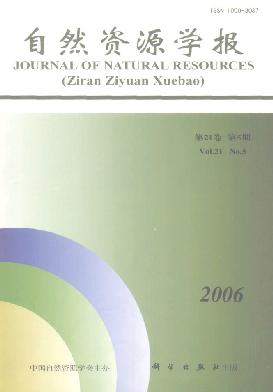Special Column:Celebration of the 70th Anniversary of IGSNRR, CAS
CHENG Jia-hua, DING Feng-yuan, LI Sheng-fa, YAN Li-ping, LI Jian-sheng, LING Zhen-lin
The coastal zone of the northern part of East China Sea was the spawning and feeding grounds for many species of fishes,and was one of the important marine fishing regions in China.But with fishing activity intensifying and overfishing,and seawater pollution deteriorating,the fish community structure changed consequentially in the last half century.Based on the data collected from bottom trawl surveys conducted in June of 1964,1982,1999 and 2005,the temporal changes of fish community structure in the coastal zone of the northern part of East China Sea(29°00'~31°30'N,123°00'~125°00'E)in summer were analyzed.The result showed that the similarity index of species composition decreased both in mean biomass and mean number in 2005,while the time intervals increased compared to the other three surveys.Though the fish mean biomass did not change significantly,the fish individual number increased during 1982 to 1999.Though the fish individual number was high,the small individuals increased during 1999 to 2005.The fish species number which appeared in June of 1964,1982,1999,and 2005 was 64,78,64,and 47,respectively.The dominant species were Trichiurus japonicus,Synagrops japonicus and Argyrosomus argentatus in June 1964;T.japonicus,Scomber japonicus,A.argentatus,Acropoma japonicum,Pampus cinereus,Apogon lineatus,Thamnaconus septentrionalis and Muraenesox cinereus in June 1982;T.japonicus,Sc.japonicus,A.lineatus,Engraulis japonicus,Larimichthys polyactis,Trachurus japonicus and Trachip-terus trachypterus in June 1999;and T.japonicus,Psenopsis anomala and L.polyactis in June 2005,respectively.The most dominant species was T.japonicus in these four surveys,but its stock was declining.The other dominant species changed from the high-valued demersal fishes in the 1960s to the pleagic fishes in the 1980s,and then changed to the present less demersal and pleagic fishes with simple fish community structure.The biodiversity index of fishes increased during the period of 1964 to 1982,but then decreased gradually.This change can be explained with the intermediate disturbance hypothesis.The fishing was in the moderate and full status in the surveyed area before the 1980s,then it was in over-fishing status,and this status was deteriorating year by year.The fish individual number with integrated community size spectra ≥20cm was decreasing from 1964 to 2005.The maximum and the minimum fish individual number with integrated community size spectra <20cm were in 1999 and 2005,respectively.These changes in integrated community size spectra indicated an increasing tendency in the number of small-sized species or small size individuals and a declining tendency in the number of large size individuals as well as a diminishing length range in the coastal zone of the northern part of East China Sea during 1964 to 2005.
